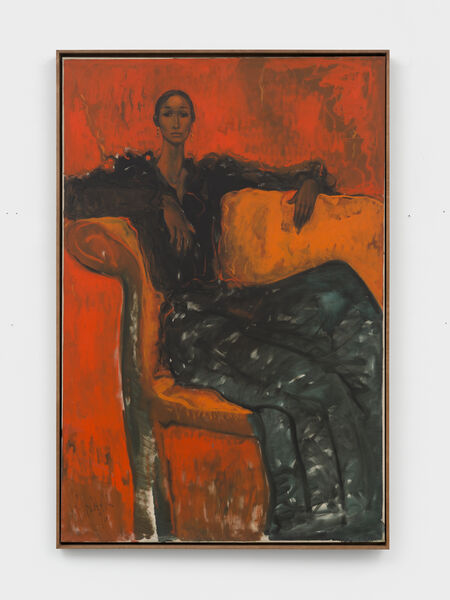

After weeks of relentless downpours, Los Angeles is ready to shine as the art world converges on the West Coast art capital. With Frieze Los Angeles just around the corner, several tastemaking galleries such as C L E A R I N G, Perrotin, Rele, and Southern Guild have been expanding into the city, marking an exciting moment in the local art scene.
As crowds begin to flood into LAX for the warm weather and the fifth edition of Frieze L.A., the City of Angels is brimming with countless knockout exhibitions. These eight must-see gallery shows during L.A. Art Week will give visitors and locals alike a taste of the city’s robust cultural schedule.
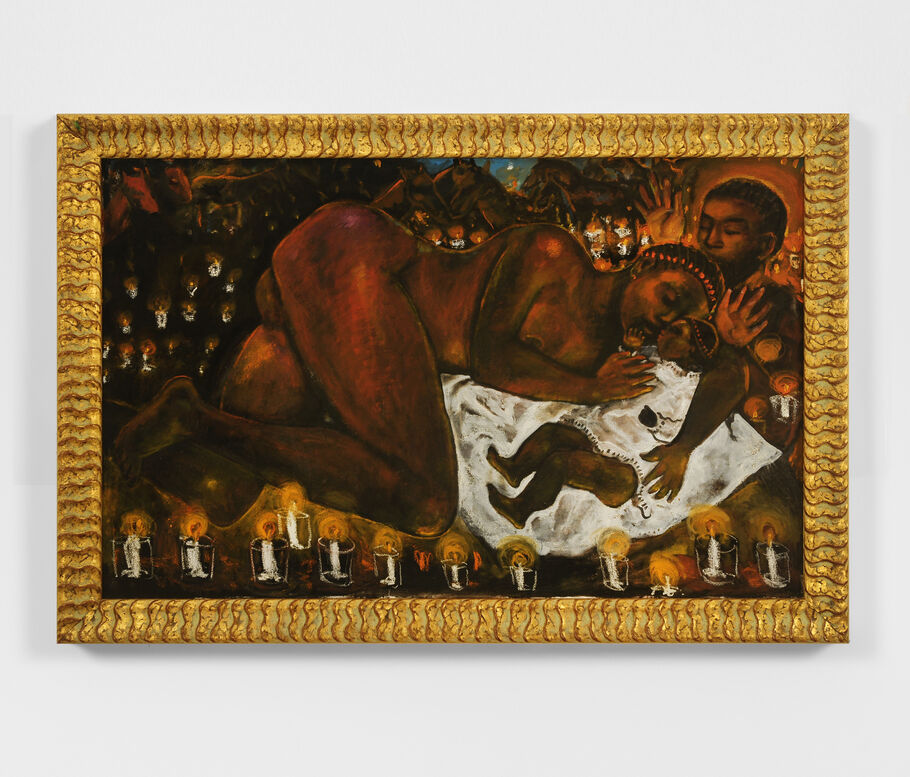
Geoffrey Holder was a polymath—an actor starring in the 1973 Bond film Live and Let Die, the Tony Award–winning director of Broadway’s The Wiz, and a prolific portrait artist. Anchoring his prestigious and multidisciplinary career, Holder’s practice as a painter spanned the 1950s until his death in 2014. At James Fuentes in Los Angeles, a solo exhibition curated by Erica Moiah James celebrates Holder’s career as a visual artist, offering a comprehensive view of his explorations of Black life and culture through his expressive portraits.
Central to Holder’s work as a painter was his muse and wife, Carmen de Lavallade, a dancer and actress he met during the Broadway production House of Flowers in 1955. The exhibition features several portraits that capture de Lavallade’s essence, the earliest being Portrait of Carmen de Lavallade (1956).
Meanwhile, many of Holder’s paintings grapple with Afro-Caribbean, African, and canonical Christian traditions, seen in paintings such as Nativity (2005), which depicts a Black woman lying on the ground cradling a baby surrounded by candles. Above all, this monumental selection of works champions Holder’s contributions to portraiture—just one accomplishment in the multifaceted artist’s life.
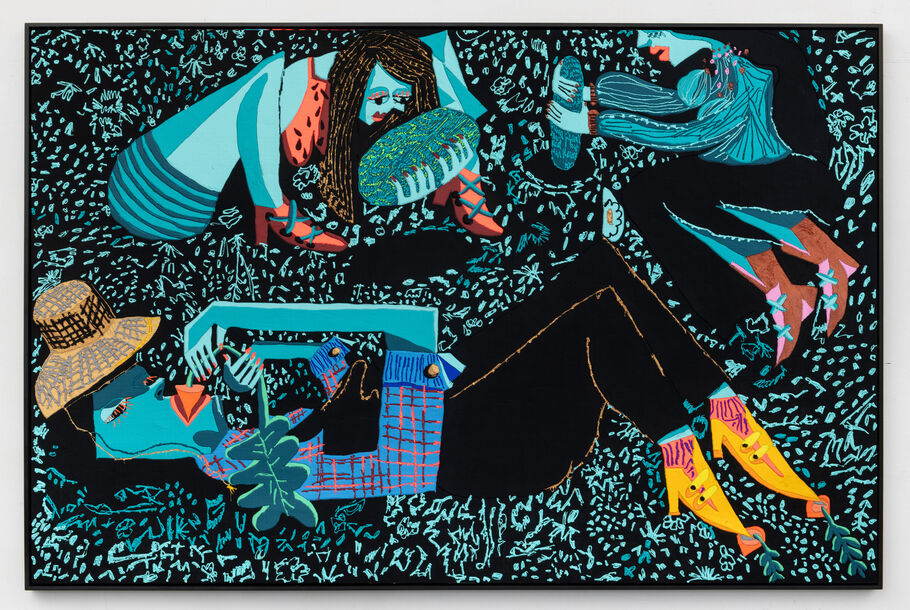
By pushing paint through the aluminum mesh using her fingers, as well as palette scrapers, syringes, and pastry piping bags, Wheat creates textured, vivid surfaces that invite viewers to explore the symbiotic relationship between these women and their environment. A key piece, Holes (2023), illustrates three women in a mythical garden landscape—two digging holes while one reclines as she eats a carrot. Wheat offers a glimpse into a world where societal norms are upturned and nature is revered.
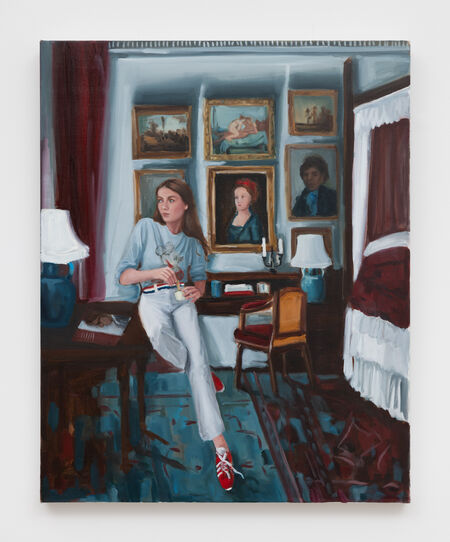
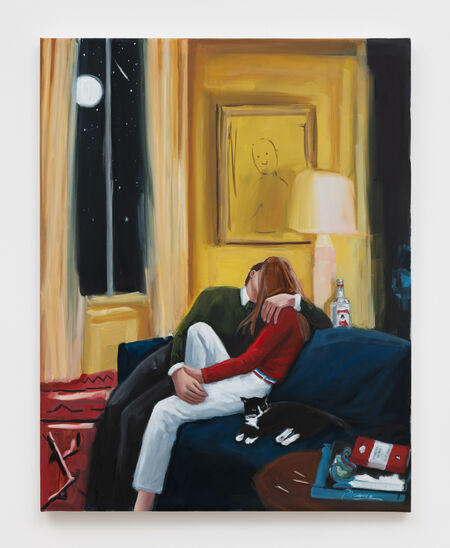
Karyn Lyons bids farewell to her adolescence in her exhibition “The End of the Night,” whose title is taken from a B-side track by The Doors. This show will be Lyons’s debut solo exhibition at Anat Ebgi in Los Angeles, featuring a selection of paintings where the tumultuous yet thrilling memories of girlhood are both celebrated and mourned.
These canvases, primarily oils on linen, with several works on vellum, illustrate and memorialize scenes of her youth, whether that’s a quiet moment with a sweet treat in The Lemon Italian Ice (2023) or a long-forgotten hook-up in A Crush on Byron (2023). Other works place her age, such as her painting Dream Date (2023), featuring a young girl standing in front of a David Bowie poster. Through her work, Lyons explores themes of autonomy and longing, with subjects often depicted in moments of solitude or subtle rebellion. Here, she pays homage to a younger version of herself through these scenes of early introspection and exploration.

The sensation of déjà vu—feeling eerily familiar in a new moment—anchors the latest group exhibition at Abigail Ogilvy Gallery, a collaboration with New York’s Cierra Britton Gallery. Opening on February 24th, “Déjà Vu” features art from nine artists whose work reflects the uncanny overlap between past and present, often returning to the question: “What could have been?”
These canvases, filled with mythical figures and dreamscapes, challenge the viewer’s understanding of memory and experience. Barbadian figurative artist Alanis Forde’s A Tapestry: The Deity and Gatekeeper (2024) illustrates two identical, mirrored figures lounging above a bed of green leaves among a dense star-like backdrop. Meanwhile, Liberian painter Lewinale Havette’s bright red acrylic print Mother Water (2024) depicts a close-up portrait of two faces brushing against each other above a reflecting pool. In both paintings, mirrored figures evoke a sense of possibility, showing how our lives are often malleable and subject to subtle change.
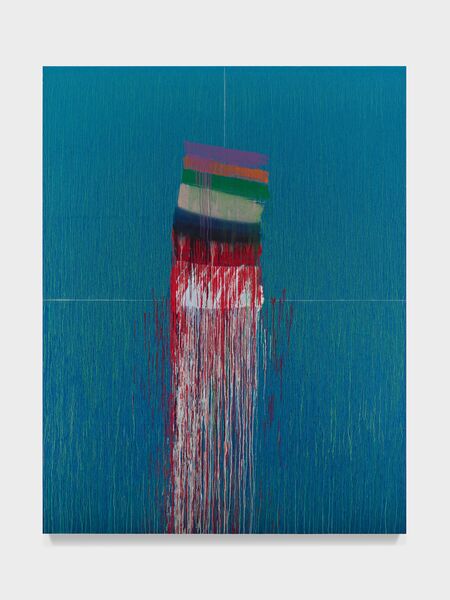
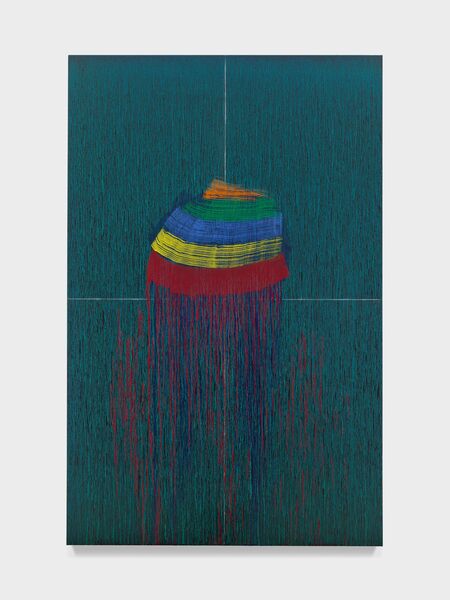
“When I think of L.A. now, I think of the sky and the ocean even more than the light, and that’s the origin of my latest work,” Pat Steir said in the press release statement for “Painted Rain” at Hauser & Wirth, marking her first solo show in Los Angeles in over 30 years. Drawing on her experiences teaching at CalArts in the 1970s, the 83-year-old artist presents a new body of work exploring the color blue and meditating on the Californian sky and ocean.
In this show, Steir used her renowned technique of free-flowing paint, first prepping each canvas with green and blue to evoke the ocean and sky. She then outlined preliminary grid lines in chalk to provide a structural basis for each composition. Though not immediately visible, these grids organize the space, guiding the vibrant colors that break through the center and fall down the canvas like rain. For instance, in Painted Rain #2 (2022–23), featuring a cascade of red and white falling down the canvas, the center colors are fixed on the crossing gridlines. Many of Steir’s paintings explode with bright colors but retain a sense of stability, like the horizon splitting the blue sky with the blue ocean.
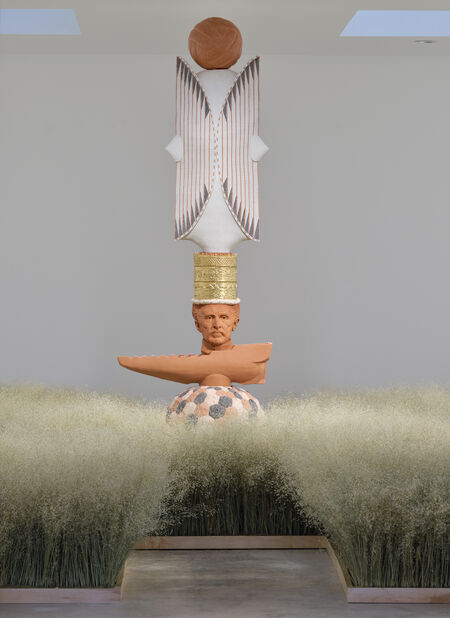

Tavares Strachan’s show “Magnificent Darkness,” on view at Marian Goodman Gallery until April 13th, presents six different installation environments across the gallery—each crafted with ceramic, bronze, marble, and neon—filled with paintings and sculptures. The main gallery, the first environment, acts as a gateway, featuring a smaller version of Strachan’s ongoing research project and sculpture The Encyclopedia of Invisibility (2018–present), highlighting historically marginalized narratives. Nearby, a blue and yellow neon text artwork inspired by James Baldwin, There is a Light in Darkness (2024), features synchronized audio, providing a backdrop for the entire exhibition.
Elsewhere, earthen floor and life-sized ceramic sculptures of explorers like Matthew Henson celebrate underrecognized Black figures, and Amina (A Map of the Crown) (2024), a new bronze bust, delves into the personal and political significance of hair. Through these interconnected spaces, “Magnificent Darkness” promises a full overview of Strachan’s studies of light, darkness, and the unseen histories that shape our world.
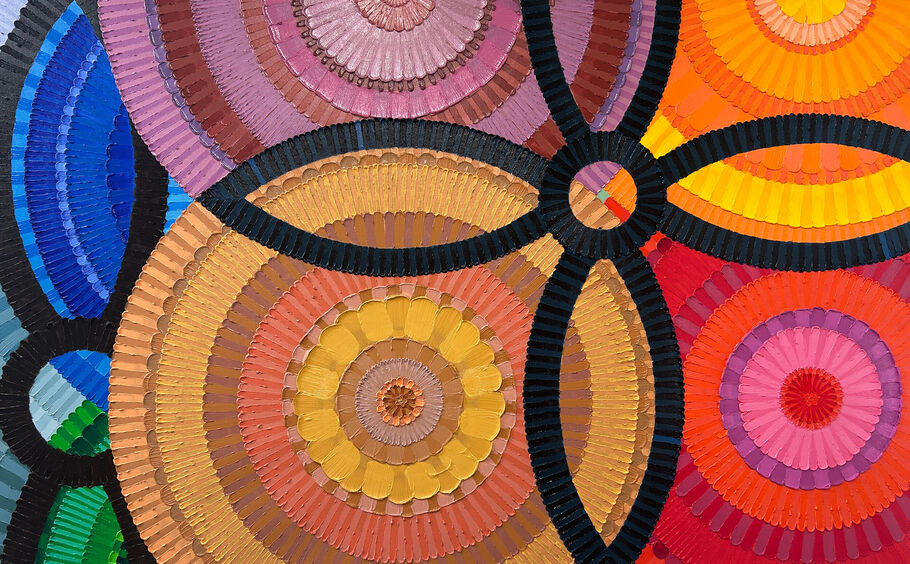
June Edmonds’s new paintings in “Meditations on African Resilience” draw inspiration from the emblem of the river leaf (ebe-amẹn), a sacred quatrefoil symbolizing unity in the ancient Kingdom of Benin. This symbol is the foundation for Edmonds’s third solo exhibition at Luis De Jesus Los Angeles, running from February 24th through April 13th, where she explores themes of resilience and memory. The artworks, pulsating with deep, resonant colors, layer this emblem with abstract forms and textures.
Edmonds enhances the river leaf motif by integrating the vesica piscis, a mathematical shape formed by the intersection of two disks, and Adinkra symbols—a communication system originating in Ghana. These elements, observed in 15th- and 16th-century Benin bronze plaques, inform Edmonds’s portrayal of historical narratives of the Oba (king) and his royal court. Her work memorializes not just historical events, but also contemporary figures of the African diaspora, thereby championing the strength of Black people throughout history.
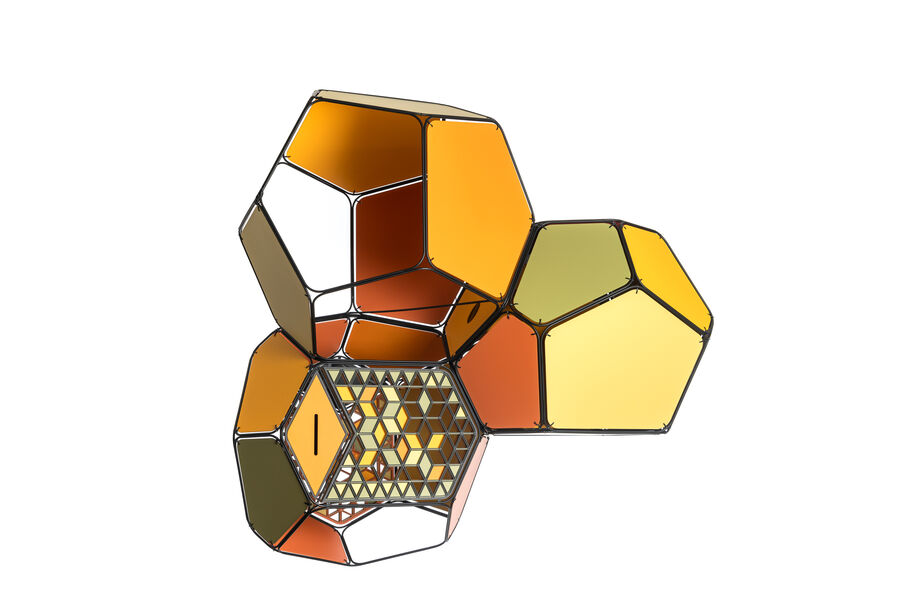
Tomás Saraceno, Cloud Cities: Species of Spaces and Other Pieces, 2024. Courtesy the artist and Tanya Bonakdar Gallery, New York / Los Angeles.
Argentine artist Tomás Saraceno first started working with spiders nearly two decades ago. Inspired by the arachnid’s webwork, the artist incorporated the spiders from his gallery into his work, facilitating a collaborative effort between the artist and nature. In “Live(s) on Air” at Tanya Bonakdar Gallery in Los Angeles, one dimly lit gallery space is dedicated to showcasing these collaborations. Among them is Hybrid semi-social SAO 17888 built by: a solo Cyrtophora citricola - six weeks (2023), a sculpture crafted using maple wood, MDF, glass, paint, and spider silk, woven by a spider in Saraceno’s Berlin studio space.
This piece represents Saraceno’s vision for a more interconnected and empathetic coexistence with the natural world. Saraceno’s ongoing “Cloud Cities” series, in which he creates geometric structures designed to float in the air, offers a radical vision for sustainable and airborne urban living that directly interacts with the atmosphere and environmental forces.
A central piece of the show is Fly with Pacha, Into the Aerocene (2024), a film documenting a sustainable aerosolar balloon journey that reflects the artist’s advocacy for ecological stewardship in the local communities of Salinas Grandes and Laguna de Guayatayoc in Jujuy, Argentina, which are currently fighting to protect the land from lithium mining.
